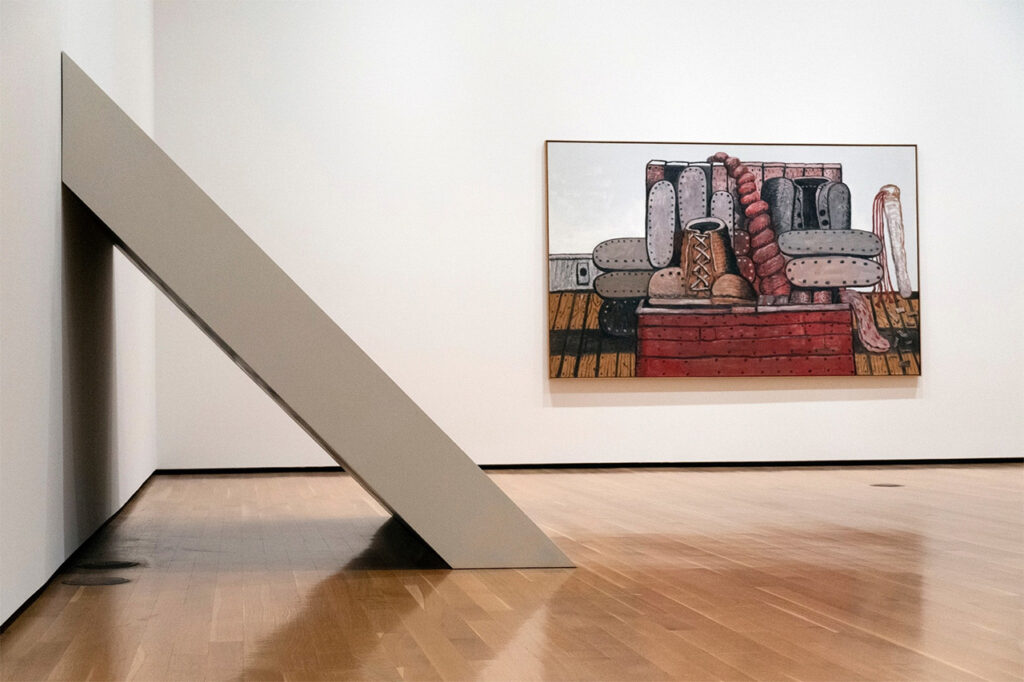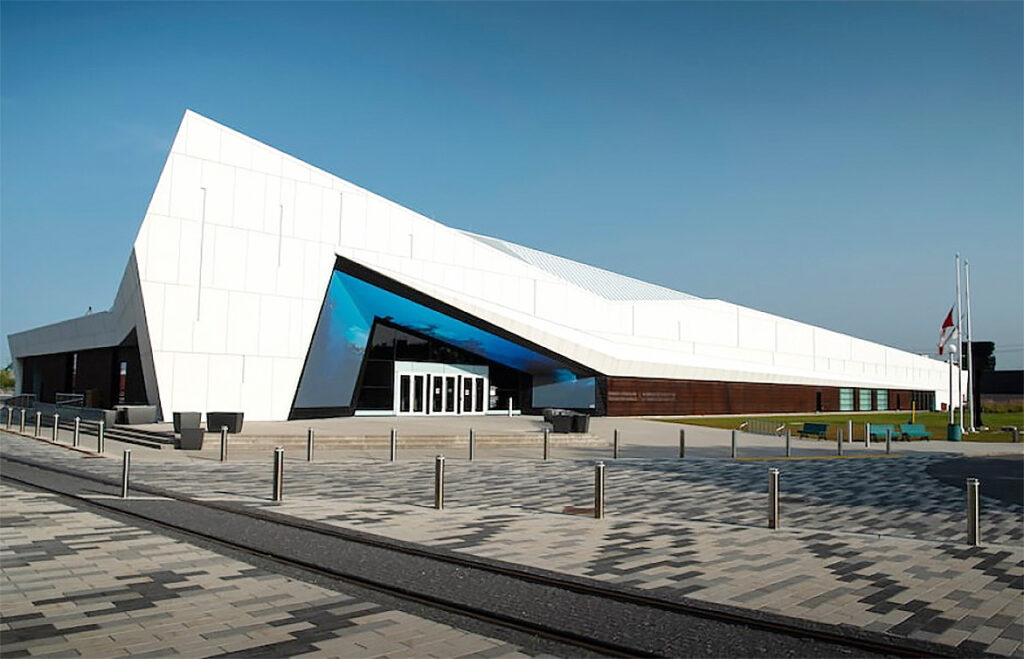As mission-driven institutions oriented around specific sites, museums have usually focused their technology resources on collection databases, customer management, and scientific research. Museums have addressed the technical debt of their customer-facing systems — and this has often reduced the attention paid to internal systems and programs that seem removed from visitor impact. Ordinary work tools for collaboration, version control, and content creation rarely garner the same attention.
The pandemic-driven museum closures and the ensuing “pivot to digital” for online access to collections and scholarship are well known. Institutions pushed hard to start, accelerate, and finish digitization projects and increase online offerings to audiences in 2020 and 2021. Museum leaders and technology professionals found issues around workplace technology more difficult to solve, especially during the shift to remote and hybrid work.
“Everyone learned anew”

According to Akron Art Museum’s Seema Rao, cloud platforms proved useful in breaking institutional silos and working across hybrid teams, representing a “minimum necessary technology.” Image: Akron Art Museum on Facebook
“Everyone learned anew,” says Seema Rao, Deputy Director and Chief Experience Officer at the Akron Art Museum. The big pain point, she adds, was not just that museum workers were stuck with legacy systems, but that siloing had led to a proliferation of systems around the institution.
As a result, cloud apps like Google Suite were especially useful for hybrid teams. Issues like finding files on a shared server became more pointed with distributed teams, Rao notes, and Google Docs helped with locating files for shared productivity. “Today we know where all the files are — that kind of thing can take a year,” she says, adding that cloud documents are a “minimum viable technology” or even a “minimum necessary technology.”
Jennifer Foley, Deputy Director for Collections and Engagement at the Georgia O’Keeffe Museum in Santa Fe, NM, says that when people have a need such as shared editing, they go to the platform that provides it, even if it’s an unofficial one for the institution like Google Docs. Though an enterprise program like Microsoft Office has Teams and cloud versions of Word and Excel, there is a low-barrier expectation in apps like Google Docs.

Apps such as Slack, in addition to project management tools, aided workflows, though remain difficult to scale. Image: Austin Distel / Unsplash
Programs more common in museum digital departments — like the chat app Slack, and project management tools like Trello and Asana — made inroads into other museum workflows as hybrid work emerged during the pandemic. However, these are still difficult to scale across the often-siloed internal workings of museums.
Individual departments may have the program that they like. Foley mentions Wrike, a cloud-based app that has a loyal following, and Airtable, a “spreadbase” program (with features of both spreadsheets and databases) increasingly popular in various museum departments. Jira, a job ticketing program from Atlassian, the company which also owns Trello and the Basecamp-like Confluence, has moved from managing discrete tasks to assisting in workflows. “Everyone has different preferences and different comfort levels,” she says.
Rao notes that eliminating technology silos became more important. “All of the organization’s work became ‘real work,’” she says, as the stakes were higher during not only the rush to digitize the collection and get it online, but to keep projects going despite teams no longer being co-located. “Everything [digital] became more a part of everyone’s job,” she adds.
The collective use
Though broad buy-in is always an organizational problem, in non-profits that may be less used to sophisticated enterprise software solutions, “the program follows the culture” of the department and even the team, says Foley. “The value proposition is in the collective use.”
Foley and Rao both note that workplace software is often prioritized less than collection, customer, or public-focused apps. “There always has to be a clear value proposition for a new technology, like a collection database, for instance,” Foley says. The case for the latter may be easier to make than a collaborative program, especially when there may already be multiple legacy programs around the institution.
That may be changing. Museum workplaces discovered “these are things that offices do; you can’t avoid tech just because you work in a museum,” Rao says.

Establishing centralized technology within museums can pose challenges, notes Ingenium’s Ryan Dodge, from implementing digital governance to ensuring consistent use across the organization. Image: Ingenium — Canada Science and Technology Museum
Ryan Dodge, Chief Digital Officer at Ingenium, a three-campus institution in Ottawa, has to manage an “enormous digital ecosystem,” where long histories with particular programs can lead to workflows shaped by different software. A well-known package from Microsoft can actually complicate things, Dodge says; even an established workplace program like Teams can still require a lot of effort to get people to use it correctly and consistently across, well, teams.
Dodge has focused as much on specific programs as on “trying to implement digital governance,” he says, meaning a shared set of technology standards and practices. Museums are fairly new to this kind of thinking, Dodge notes, and the only person in the field he could get advice on digital governance from had worked previously in a technology role in municipal government. Aligning different systems among different departments, never mind institutions, is a challenge.
He’s been trying to get institutional colleagues to bring in digital and IT early in the process of setting up or requesting new systems. A paradox of museum silos is that when the overall organization moves slowly with technology, individual teams and people may move quickly — making it harder for a centralized technology office to set up cost-effective programs that work for the entire org.

Within smaller organizations less used to sophisticated enterprise software solutions, says Jennifer Foley at the Georgia O’Keeffe Museum, “the value proposition is in the collective use.” Image: Georgia O’Keeffe Museum
Yet that speed which individual departments and teams prefer, Dodge notes, can come with downsides, as they may not read terms of service or realize privacy implications for the institution. “There’s no perfect solution,” he says, to make everyone in the organization treat technology in the same way. He doesn’t want to “hinder innovation, especially when people are isolated and spread out,” he adds.
The pandemic, Foley says, blurred the technology boundaries of social “hang-out” tools and workplace programs. This digital transformation of museums has already evolved collection systems past index cards, but the field’s historical lack of an emphasis on digital literacy has left workplace programs catching up, especially as activity levels and concerns over DEIA ramp up, but staffing and funding levels remain strained by the disruption of the pandemic.
The future of workplace tech
Museums will continue to seek cost-effective and centralized solutions to workplace technology problems, though the fast-moving world of online visitor-facing programs may always stay front and center in leaders’ attention. With continued remote/hybrid issues and workers using their own apps in more distributed museums workplaces, the sector should expect more tension between teams wanting the path of least resistance and cautious organizations seeking better and more consistent digital governance.
The work of all museum staffers, it should be noted, does affect the museum-goer. Now that museum workers are busier than ever, a focus on digital literacy and interoperability may become the most important technology challenge for institutions.
Robert J Weisberg has been working in the publications and technology part of the museum field for over a quarter-century. Read his twice-weekly writing about the organizational culture of cultural organizations by subscribing for free to his blog Museum Human. He can also be found on Twitter at @robertjweisberg.



